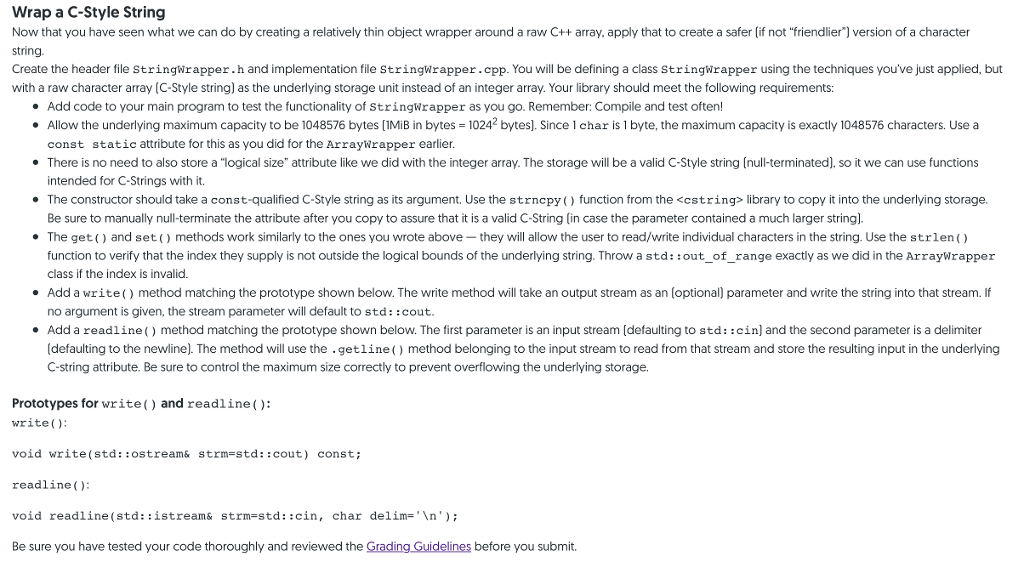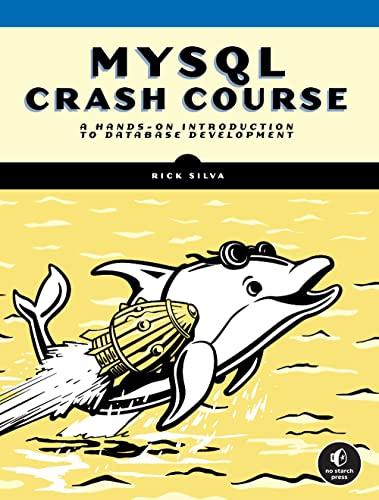need c++ format
c - string problems
need both .h and .cpp

Wrap a C-Style String Now that you have seen what we can do by creating a relatively thin object wrapper around a raw C++ array, apply that to create a safer [if not "friendlier] version of a character string. Create the header file StringWrapper.h and implementation file StringWrapper.cpp. You will be defining a class Stringwrapper using the techniques you've just applied, but with a raw character array (C-Style string) as the underlying storage unit instead of an integer array. Your library should meet the following requirements: Add code to your main program to test the functionality of StringWrapper as you go. Remember: Compile and test often! Allow the underlying maximum capacity to be 1048576 bytes (IMiB in bytes 10242 bytes]. Since 1 char is 1 byte, the maximum capacity is exactly 1048576 characters. Use a const static attribute for this as you did for the ArrayWrapper earlier There is no need to also store a "logical size" attribute like we did with the integer array. The storage will be a valid C-Style string [null-terminated]. so it we can use functions intended for C-Strings with it. The constructor should take a const-qualified C-Style string as its argument. Use the strncpy) function from the
library to copy it into the underlying storage Be sure to manually null-terminate the attribute after you copy to assure that it is a valid C-String (in case the parameter contained a much larger string]. The get () and set () methods work similarly to the ones you wrote above- they will allow the user to read/write individual characters in the string. Use the strlen() function to verify that the index they supply is not outside the logical bounds of the underlying string. Throw a std::out_of_range exactly as we did in the ArrayWrapper class if the index is invalid. Add a write() method matching the prototype shown below. The write method will take an output stream as an (optional) parameter and write the string into that stream. If no argument is given, the stream parameter will default to std::cout. Add a readline() method matching the prototype shown below. The first parameter is an input stream [defaulting to std: :cin) and the second parameter is a delimiter (defaulting to the newline!. The method will use the .getline) method belonging to the input stream to read from that stream and store the resulting input in the underlying C-string attribute. Be sure to control the maximum size correctly to prevent overflowing the underlying storage. Prototypes for write() and readline (): write(): void write(std : :ostream& strm=std ::cout) const; readline() void readline (std::istream& strm std::cin, char delim- Be sure you have tested your code thoroughly and reviewed the Grading Guidelines before you submit







